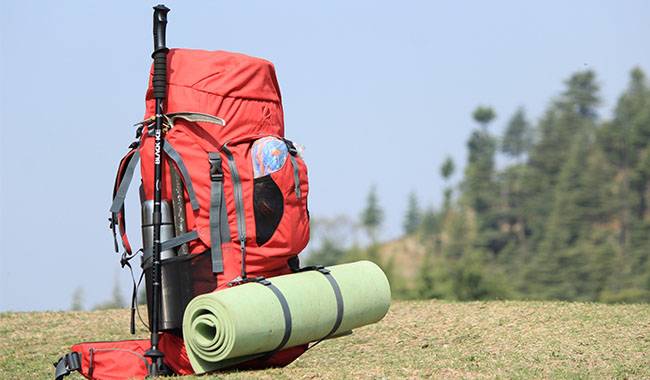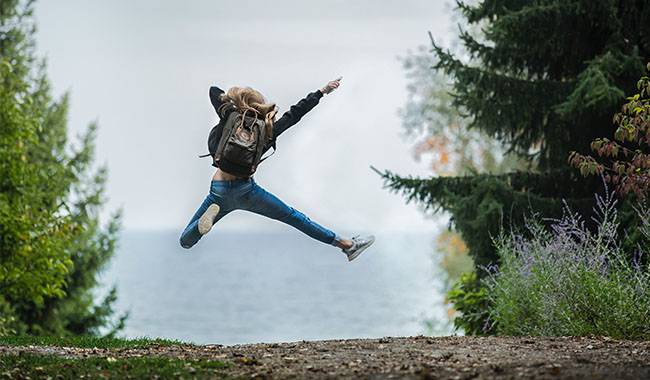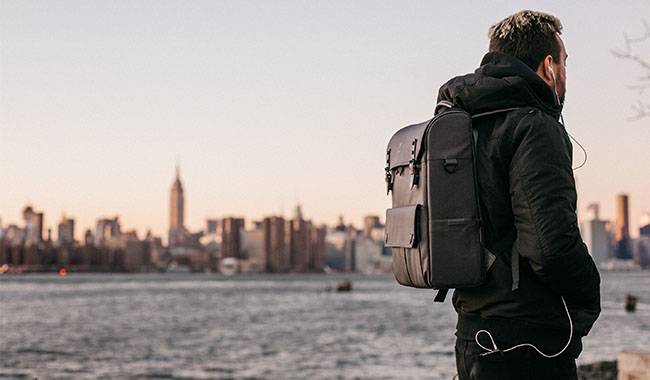
Overheard in a store. The parents had packed for three days for their teenage son’s first camping trip. They had already bought boots and clothes. Now,” the father said, “let’s go buy you a 220 lbs (100 liters) backpack. You will learn more about How to Choose Your Camping Backpack Size by the LCN Outdoors article.
These extremes are not uncommon: one person buys an expedition backpack for a weekend hike, and another thinks an 88 lbs (40 liters) backpack is enough for a 10-day hike in the mountains. You can go camping like this, but you don’t have to. Here’s how you know how much of a backpack you’ll need and what works best for different types of hikes.
What Should Go in a Backpack
If you are going camping as part of an organized, commercial, or athletic group, you should first ask your leader for a gear list. This will give you a general idea of the size of your backpack and you should use it as a guide. In order to give you adjustments, you need to know the contents of your backpack.
- Personal equipment: clothes, shoes, sleeping bag, utensils, and other essentials. The weight and size of this equipment usually decrease with experience: beginners will bring a lot of unnecessary stuff, while experienced hikers know what they can do without and bring only the essentials.
- Communal equipment: tent, gas or campfire equipment, first aid kit, repair kit. In group camping, all of these are shared among the participants, for example, one person takes the tent cover, another person takes the inner tent, and a third person takes the arc and burner.
- Special equipment: Depending on the type of hike, this may include ropes and “iron” for mountain hikes, kayaks or catamarans for water hikes, and skis or snowshoes for winter hikes.
- Groceries. Their weight and size depending on the capacity of the general tube to facilitate food distribution.
An important consideration is what kind of mat you bring on your camping trip. Foam is usually worn on the outside, so you don’t need to make room for them inside your backpack. On the other hand, inflatable and self-inflating pads are on the inside, and they come in all shapes and sizes. The most compact ones take up the volume of 0.26 gals (1 liter) thermos, while others are as big as a small sleeping bag. So, if you choose an inflatable pad, don’t forget to consider its size.
A common mistake made by commercial hikers is to pack their personal belongings in a small backpack and forget to leave room for group gear and food. If you are traveling in a group and picking up your “common items” before you leave, you should leave at least one-third free space in your pack.
Factors That Influence Camping Backpack Size Selection

- Type of hike. For hiking in the Alps and hiking in the Yellowstone area, backpack volume varies greatly.
- Length of the trek. Obviously, a weekend outing requires a different backpack than a three-week independent adventure.
- The specifics of the route. The size of your backpack depends a lot on whether you are staying in a tent or a hut, carrying your own food, or eating at a shelter. The time of year is also important – there is more stuff in winter and it is bulkier than in summer. Technically challenging routes may require additional climbing equipment.
- Personal differences. A girl 5 feet (1.5 m) tall and a man 6.5 feet (2 m) tall will need different packs on the same trip, if only because they take up different amounts of space.
- Choose the gear approach: “traditional” or “go with the flow”. Experienced light hikers will use a 110 lbs (50 liters) backpack, while beginners will use a 190 lbs (86 liters) backpack.
Now let’s look at these factors in more detail.
Determine the Purpose of the Backpack
The first and most important question you need to answer before choosing the size of your backpack is: where will you be taking it? A weekend trip or a long expedition, a water trip or a ski trip, a light hiking trip, or a category hiking trip. Logically, the longer the trip, the larger the backpack should be – at the very least, you should bring more food and gas bottles, clean socks, and spare clothes.
- For example, a 110 lbs (50 liters) backpack is sufficient for a weekend hike in the forest or lower mountains.
- A backpack with a capacity of 130-200 lbs (60-90 liters) is suitable for hiking or easy mountain trekking. To give you a more precise number, you’ll need to know the specifics of the route, which we’ll tell you next.
- For all types of hikes and expeditions, you need at least 200 lbs (90 liters). On such trips, a lot of space is taken up by special trekking equipment: ropes, tether systems, and other “hardware”. Therefore, a backpack for such a trek should be larger than a backpack for a simple hike, which does not require special equipment.
- Water and ski trips require the largest backpacks with a capacity of 220-260 lbs (100-120 liters). On water trips, you must bring a boat – even a folding kayak will take up space. Ski trips always require more gear than summer hiking trips, simply because you have to dress warmer in the winter.
- Another story is camping with young children, where one parent takes the kids and the other takes something else.
Tip: If you choose the first set of equipment, make sure the sleeping bag can fit in the backpack and have room for other things. For example, you might take an 88 lbs (40 liters) backpack on a weekend camping trip, but if you go to the woods in the winter, you may need a warm sleeping bag, which will take up the entire backpack and leave no room for anything else. So before you buy a backpack and sleeping bag, check that they are compatible just in case. The largest backpacks are used for independent mountain hikes when there is no opportunity to resupply en route.
Details of Our Research Route
The size of the backpack is not always proportional to the length of the hike. For example, on European trekking routes such as the Camino de Santiago in Spain or the Royal Route in Sweden, you can hike for a month with a 66 lbs (30 liters) backpack because it contains only personal items. Tourists will sleep and eat in sheds, which means you don’t need a tent, sleeping bag, pad, or a burner with gas. Therefore, it is important to know the specifics of the route in order to choose the right size backpack.
- Where will you stay – tent or cabin? If you don’t need a tent, that is minus 11-22 lbs (5-10 liters) of backpack volume.
- If you are staying in a cabin, do you need a sleeping bag, and what kind of sleeping bag? For example, in European shelters, a light sleeping bag or even a liner will suffice, but when trekking in Nepal, you need a warm sleeping bag – it’s cold in the highlands and the lodges in Nepal are not heated.
- Will you carry your own stuff? In Nepal, for example, you can hire a porter and pack light. Then you will need a 22-33 lbs (10-15 liters) backpack for yourself and a bag for the porter.
- How cold will it be on the mountain trails and at night? The amount of warm clothing and the size of your sleeping bag depends on this. In winter you will need a backpack 22-44 lbs (10-20 liters) larger than in summer.
- Do you carry food with you, cook on the stove, or eat at the shelter? A week’s worth of food and gasoline takes up about 33 lbs (15 liters) of volume.
- Is it possible to wash clothes and wash on the trail? On an easy summer hike, there is no problem washing socks and cleaning yourself in a mountain river. This is more effective than carrying 10 pairs of socks and as many T-shirts – it is better to bring a pair of replaceable socks and wash them regularly.
Tip: Tourists often do a lot of smuggling on long sporting trips: some food and equipment are carried or transported to a predetermined location and then out to resupply. You can greatly reduce the weight of your backpack. For example, if you do two rides in a month-long trip, you only need to carry food for 10 days instead of 30. However, the size of the pack is less affected by this: you have to move it to the right place and then pick it up again, in addition to the empty gas cylinders, which take up the same amount of space as a full one. Backpacking is therefore a good way to reduce the weight of your pack, but should not be seen as an excuse to take a smaller pack.
Don’t Forget Individual Differences – Camping Backpack Size Selection

Traditionally, girls are given smaller portions than men when camping – they get less communal equipment and food. This means they need a smaller backpack.
The same set of things will take up different amounts of space for a small, fragile girl than for a big guy. Even the sleeping bag can be the right size to save space in the backpack. So, if in the equipment list, give the head to write 180 lbs (81 liters), also consider: a girl with 5 feet (1.5 m) does not need such volume, but a guy with 6.5 feet (2 m) may not have enough space. Teenagers participating in children’s camping need a backpack about the same size as the average girl.
Another personal trait is different hardiness. One person only needs a fleece for winter hiking in the Yellowstone area, another person will freeze without a down jacket. And a down jacket is 6.6-11 lbs (3-5 liters).
Choice Strategy: Traditional Travel or Go with the Flow
There are two approaches to choosing gear, loosely referred to as “traditional” and “light”. Traditional gear is usually the starting point for all campers – it’s cheaper and easier to handle, but bulkier and heavier. Experienced hikers try to reduce weight and bulk by choosing lighter tents, sleeping bags, and clothing, and getting rid of everything extra in their packs.
Light hiking is not just about choosing gear by weight, but a philosophy that comes with experience. The easy way requires a clear understanding of trail conditions and equipment handling but allows you to get by with a 110 lbs (50 liters) pack, whereas a traditional hiker would need a 180 lbs (81 liters) pack.
It is not uncommon to see a backpacker carrying a small backpack with a sleeping bag underneath, a tent on the side, and a pot crunching on the other side. Far from being a simple walk, such a tactic has no advantages. All the extra equipment clings to branches and rocks, and it can fall out and get lost or get wet along the way because an 88 lbs (40 liters) pack cover can’t hold it all.
Modern backpacks have many loops for hanging equipment, but they are designed for things that you really shouldn’t put inside and need quick access to ice axes, trekking poles, helmets, and pads. Other things are best left inside.
We’ve put together some material with tips from experienced backpackers on how to save space in your pack.
Approximate Volume of Backpacks Suitable for Different Trips
To facilitate the selection process, we have made a table with examples of backpacking trips and approximate backpack volumes. These numbers are approximate and can be used as a guide, but should not be considered dogma – always adjustable to suit the route or personal preference.
| Hiking | Traditional gear | Lightweight gear |
| Medium or low mountain hike 2-3 days | 88-110 lbs (40-50 liters) | 66-88 lbs (30-40 liters) |
| Hike 7-10 days in the mid to low mountains (Undermountain Trail, Mount Mitchell, Wonderland Trail Loop) | 155-180 lbs (70-81 liters) – (60-70 year old women) | 110-130 lbs (50-58 liters) – (40-50 year old women) |
| Two-week sports mountain tour (Shenandoah, Highline Trail, Maroon Bells, etc.) | 180-200 lbs (81-90 liters) – (65-80 year old women) | 130-180 lbs (58-81 liters) – (55-70 year old women) |
| Hiking in the Alps or other warm mountainous areas overnight stays on European trails, meals in shelters | 88-110 lbs (40-50 liters) | 44-66 lbs (20-30 liters) |
| Trekking in Nepal, overnight in lodges and alpine routes (e.g., to Everest Base Camp) | 110-130 lbs (50-58 liters) | 66-88 lbs (30-40 liters) |
| Winter and water trips in the initial category | 200-260 lbs (90-117 liters) – (75-90 years old women) | 180-220 lbs (81-100 liters) – (70-80 year old women) |
So, let’s summarize
- To find the right size for your backpack, first figure out what its contents include.
- If you are traveling with a group, ask your hike leader for a list of equipment that explains the size of your backpack. This can be used as a guide while taking into account your personal situation.
- To adjust this value, study the specifics of the route: what the weather will be like, whether you need warm clothing, whether you need to carry a tent and food.
- If you build your equipment from scratch, pay attention to weight and volume. Modern technology makes it possible to reduce the equipment without compromising comfort and safety.